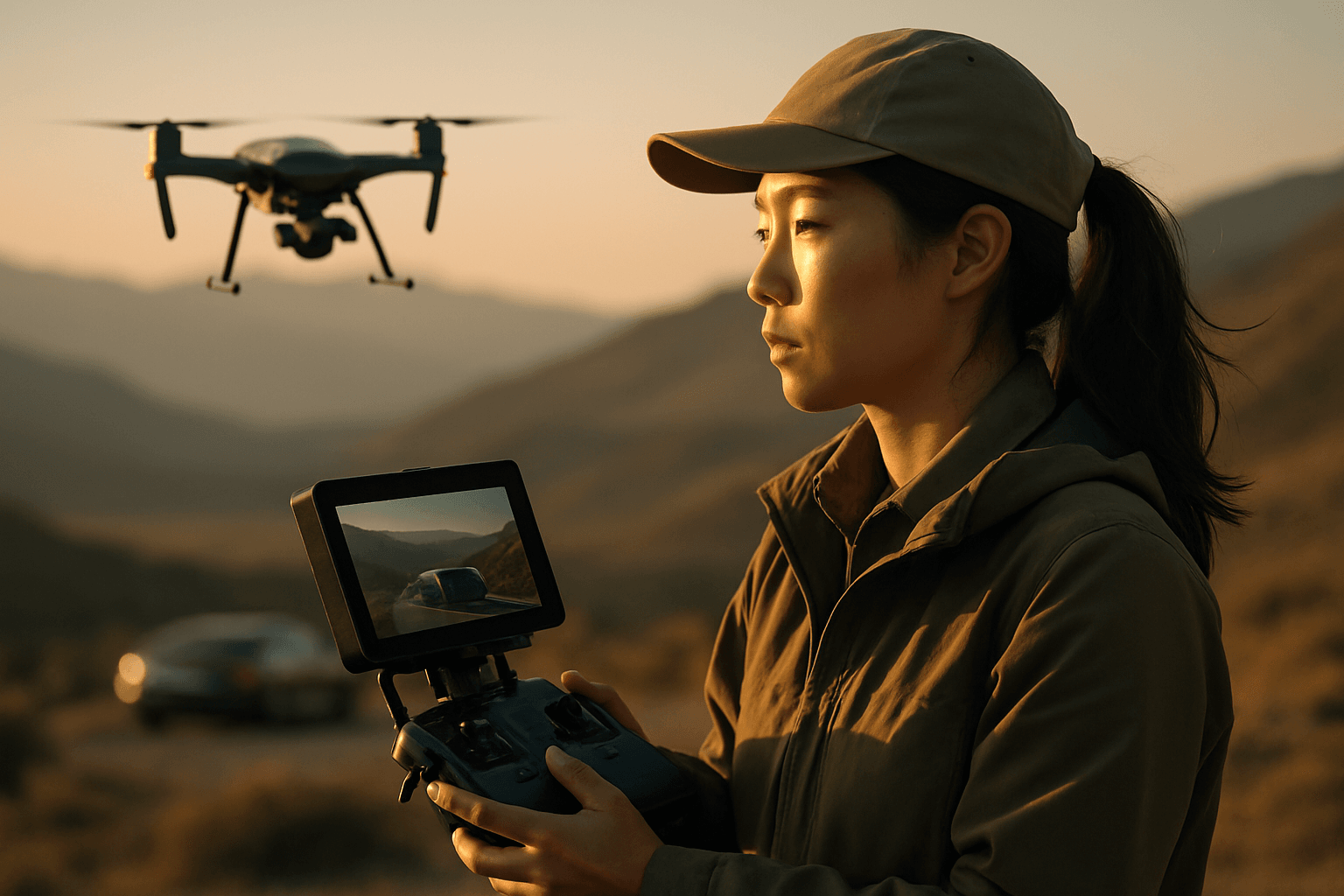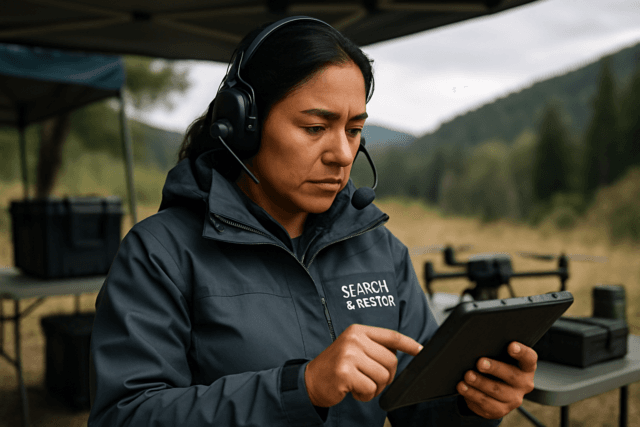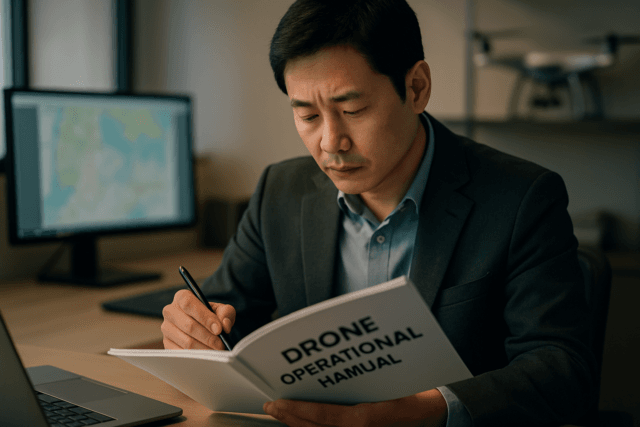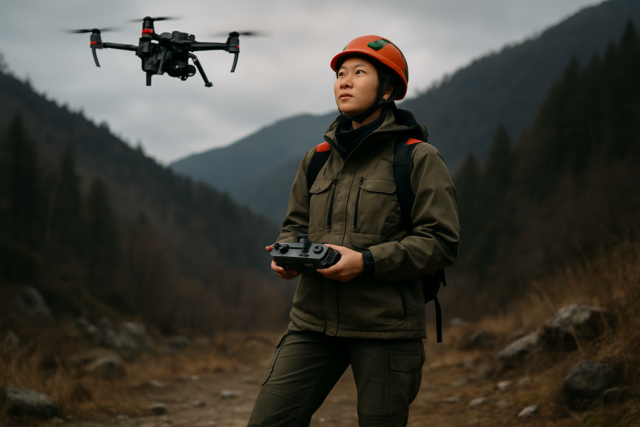The sleek lines of a luxury sedan winding through a mountain pass, a high-performance vehicle kicking up dust on a desert track, or a compact car navigating a vibrant cityscape – these captivating visuals are increasingly brought to life through the dynamic lens of drone cinematography in car commercials. Drones offer unique perspectives once only achievable with costly helicopters or cranes, revolutionizing automotive advertising by immersing viewers and enhancing brand storytelling. However, mastering aerial filming for car commercials requires careful planning, specialized equipment, and refined techniques to achieve truly cinematic results.
Planning Your Shoot: The Foundation of Success
Successful drone filming for car commercials begins long before the propellers start spinning. A meticulous planning phase ensures legal compliance, operational safety, and artistic alignment with the commercial’s vision.
Legal and Regulatory Compliance
Operating drones for commercial purposes, including filming car commercials, is subject to strict regulations. In the United States, the Federal Aviation Administration (FAA) governs commercial drone flights under Part 107.
- Remote Pilot Certificate – Part 107 License: To fly drones commercially, you must obtain a Remote Pilot Certificate by passing an aeronautical knowledge exam. This certification demonstrates your familiarity with aviation rules, operational protocols, and safety standards.
- Drone Registration and Remote ID: All commercial drones weighing over 250 grams must be registered with the FAA and display the registration number. As of September 16, 2023, most registered drones must broadcast a Remote ID signal, functioning as a “digital license plate” that provides identification and location information during flight.
- Flight Restrictions and Waivers: Drones must generally be flown at or below 400 feet, within the visual line of sight of the operator, and during daylight hours. Flying over people or moving vehicles typically requires additional FAA authorization via a Certificate of Waiver (CoW). Always use tools like the FAA’s B4UFLY app to check for real-time airspace restrictions, especially near airports and other sensitive zones. International regulations vary, so familiarize yourself with local laws if filming abroad. For instance, Russia has stringent registration and operational rules for drones over 150g, with outright bans in certain areas like Moscow.
Location Scouting and Risk Assessment
The chosen location significantly impacts the visual narrative and safety of the shoot.
- Diverse Environments: Car commercials benefit from diverse backdrops that complement the vehicle’s character. Consider open roads, scenic overlooks, cityscapes, or even closed tracks.
- Obstacle Awareness: Thoroughly scout the location for potential hazards such as power lines, trees, buildings, or unpredictable terrain that could interfere with flight paths.
- Weather Conditions: Weather plays a crucial role. Strong winds can affect drone stability and image quality, while rain can damage equipment. Ideal lighting, such as during “golden hour” (sunrise or sunset), can dramatically enhance the car’s appearance by creating appealing reflections and soft shadows. Midday sun can cause harsh shadows and reflections.
Understanding the Vehicle and Vision
Each car possesses a unique personality. Whether it’s a high-speed sports car or a luxurious limousine, the cinematography should highlight its distinct characteristics. Collaborate closely with the creative team to understand the desired mood, pace, and specific features of the car to emphasize.
Essential Drone Equipment for Car Commercials
The quality of your aerial footage is directly tied to the equipment used.
Choosing the Right Drone Platform
For professional car commercials, high-end cinema drones are often employed. Brands like DJI offer professional-grade drones such as the Mavic 3 Pro Cine, known for its 5.1K50 video capabilities and Hasselblad color profile. Other professional options include the Skydio X10, which boasts high-resolution cameras and advanced AI for obstacle avoidance, even in the dark, and Parrot’s ANAFI series. Some lighter drones like the DJI Flip and Potensic Atom 2 also offer good 4K video quality and portability.
Camera and Lens Selection
Beyond the drone itself, the camera and lens are paramount.
- High Resolution and Frame Rates: Opt for cameras capable of recording in 4K or higher resolutions at various frame rates (e.g., 60fps or 120fps) to allow for smooth slow-motion effects in post-production.
- Sensor Size: Larger sensors generally perform better in low light and offer a wider dynamic range, crucial for capturing detailed shadows and highlights on the car’s surface.
- Interchangeable Lenses: Drones that support interchangeable lenses provide flexibility to choose the right focal length for different shots, from wide establishing shots to more compressed, dramatic tracking shots.
Gimbal Stabilization and Accessories
- 3-Axis Gimbal: A high-quality 3-axis gimbal is essential for smooth, stable footage, even during dynamic movements.
- ND Filters: Neutral Density (ND) filters are vital for controlling exposure in bright conditions, allowing you to maintain a cinematic shutter speed (typically double your frame rate) without overexposing the image.
- Extra Batteries: Drone batteries have limited flight times, so a sufficient supply of charged batteries is crucial for continuous shooting.
Mastering Aerial Filming Techniques
The art of drone cinematography for car commercials lies in executing dynamic and visually appealing movements that showcase the vehicle.
Dynamic Camera Movements
- Orbit Shots: A classic and effective shot where the drone circles the car, revealing its form from all angles.
- Tracking Shots: Following the car from behind, in front, or alongside, maintaining a consistent distance and height. Varying the speed and angle of these tracking shots can add drama.
- Reveal Shots: Starting with a close-up of a detail and then pulling back to reveal the entire car and its surroundings, or starting with a wide landscape and flying to reveal the car entering the scene.
- Dolly Zoom (Vertigo Effect): While challenging with a drone, this effect involves zooming the camera in or out while simultaneously moving the drone in the opposite direction, keeping the subject the same size but altering the background’s perspective.
- Rise and Descend: Smooth vertical movements can emphasize the car’s power as it climbs a hill or its elegance as it descends into a valley.
- Low Angle Shots: While drones excel at high angles, incorporating low-to-the-ground shots can add a sense of speed and intimacy, especially for muscle cars or trucks.
Utilizing Speed and Perspective
Varying drone speed and perspective is key to conveying different emotions and highlighting vehicle attributes. High-speed tracking shots can emphasize performance, while slower, more deliberate movements can highlight luxury and design. Experiment with different camera angles, such as angling the front wheel towards the camera to give the car a more active and composed look.
Lighting and Weather Considerations
- Golden Hour: As mentioned, the soft, warm light of sunrise or sunset (golden hour) is ideal for accentuating the car’s contours and reflections.
- Overcast Days: Overcast conditions provide soft, diffused lighting, minimizing harsh shadows and reflections, which can be beneficial for certain looks.
- Washing the Car: Always ensure the car is impeccably clean to maximize reflections and vibrant paintwork.
Post-Production Excellence
The footage captured is only half the battle; skilled post-production can transform raw drone shots into polished commercial-ready content.
Color Grading and Effects
- Enhancing the Vehicle: Color grading is essential to make the car pop and align with the brand’s aesthetic. This involves adjusting colors, contrast, and saturation.
- Atmospheric Effects: Adding digital atmospheric effects like dust, fog, or lens flares in post-production can significantly enhance the cinematic feel and drama of the footage. Resources like ActionVFX and FootageCrate provide high-quality stock elements for visual effects.
- AI Video Generation: Emerging AI tools like Runway’s Gen-3 Alpha are starting to offer capabilities for generating and transforming video, which may play a role in future post-production workflows for drone footage.
Stabilizing and Refining Footage
Even with a good gimbal, minor shakes or jitters can occur. Post-stabilization software can smooth out footage further. Careful editing, including pacing and music synchronization, is crucial to tell a compelling story and maximize viewer engagement.
Safety First: Minimizing Risks
Beyond legal compliance, operational safety is paramount.
- Pre-Flight Checks: Always perform thorough pre-flight checks, including battery levels, propeller integrity, and GPS signal acquisition.
- Obstacle Avoidance Systems: Utilize drones with advanced obstacle avoidance systems, particularly when flying in complex environments or at higher speeds.
- Experienced Pilots: When hiring, prioritize certified drone pilots with a strong track record in film production and a deep understanding of flight safety protocols.
- Maintain Visual Line of Sight: Always keep the drone within your visual line of sight or use a visual observer.
By combining meticulous planning, the right equipment, creative aerial techniques, and professional post-production, drones can capture breathtaking, dynamic footage that elevates car commercials and leaves a lasting impression on audiences.





